- Find a Provider
-
Services
-
Redeemer Health provides compassionate care across every stage of life.
- View all Services
- Health Care
- Cancer Care
- Heart Care
- Hospital at Home
- Maternity Care
- Pediatric Urgent Care
- More Health Care Services
-
- Patients & Visitors
- Locations
- Careers
categories:
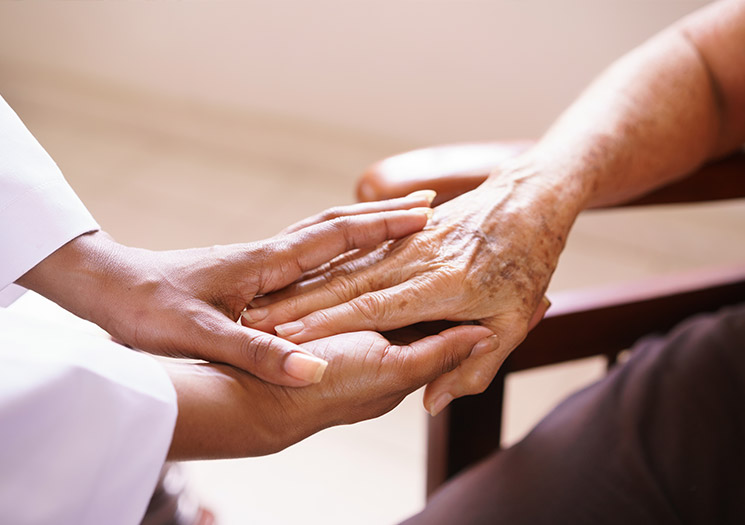
Coping with a life-limiting prognosis can be overwhelming for the entire family
At some point, it may not be possible to cure a serious illness, or a patient may choose not to receive certain treatments. Hospice care brings together a team of people with special skills—among them nurses, doctors, social workers, chaplains, personal care aides and trained volunteers. Everyone works together with the person who is dying, the caregiver, and/or the family to provide the medical, emotional, and spiritual support needed.
Some people automatically assume the suggestion to consider hospice means the end is very near, and choose to delay starting hospice care and do not take full advantage of the support it can offer. “Eligibility” means that the person’s doctor thinks he or she has less than 6 months to live should the disease take its usual course. The patient beginning hospice care understands that his or her illness is not responding to treatment aimed at curing or slowing the disease's progress and makes the decision to elect comfort directed care. This does not mean discontinuing all treatment. For example, if an older person with cancer is not responding to chemotherapy and chooses to enter into hospice care, the chemotherapy will stop, but other medical care, say, for high blood pressure, may continue as long as it is helpful. Hospice brings together a team of people with special skills to coordinate care, durable medical equipment, counseling, companionship, and bereavement services. Hospice is 100% covered by Medicare for all eligible patients, and is covered by most Medicaid and commercial insurance plans.
Because hospice is an approach to care, it’s not tied to a specific place. Generally services are rendered in the home but it can also be offered in a facility such as a nursing home, assisted living facility, hospital, or even in a separate hospice center. A member of the hospice team visits regularly, and a nurse is always available by phone—24 hours a day, 7 days a week.
Doctors may have a hard time predicting how long a person with serious illness will live. Health often declines slowly, and some people might need a lot of help with daily living for more than 6 months before they die. What happens if someone under hospice care lives longer than 6 months? If the doctor continues to certify that that person is still declining or close to dying, Medicare can continue to pay for hospice services. It’s also possible to leave hospice care for a while and then return if the healthcare provider still believes that the patient has less than 6 months to live.
Talk to your doctor if you think a hospice program might be helpful. They can help you decide what is best for you or your loved one. If you would like more information about Holy Redeemer’s Home Care and Hospice program please visit Hospice Care or call 888-678-8678.
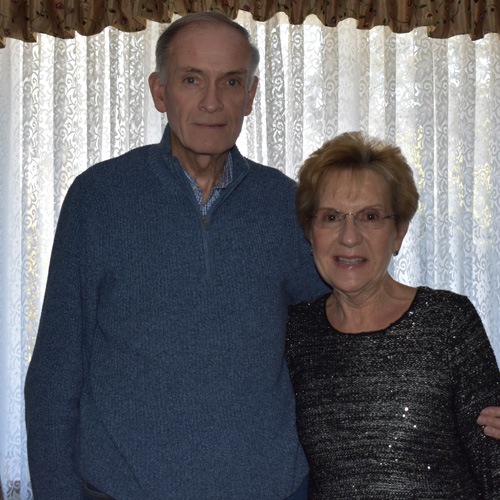
Bob McGuirl, 72, sat on the exam table at his primary care physician’s office. As his doctor tried to gently pull McGuirl’s knees apart, they wouldn’t budge. One X-ray later, McGuirl was diagnosed with arthritis in his hip. His physician offered medication as treatment but McGuirl refused.
“I didn’t want to take anything even though putting my shoes and socks on and getting in and out of the car was starting to be a challenge,” McGuirl said.
A year later, McGuirl returned for his next physical. This time, he agreed to take medication to assist with pain management. He enjoyed going for daily walks with his wife, Marie, and his arthritis was making that hobby difficult. The new medication changed everything.
“I’d take the pill on Monday and it really relieved the pain. I’d be pain free until about Wednesday,” McGuirl said.
Around the same time, McGuirl received an e-mail from Holy Redeemer Health System advertising an upcoming joint pain seminar in Feasterville. McGuirl decided to attend. The seminar featured an orthopedic surgeon and Linda Beck, Total Joint Care Program Manager as well as what to expect during joint replacement surgery and a question and answer period.
“It was great. I learned a lot,” McGuirl said, “But I had not stayed in a hospital since the day I was born. I still didn’t want surgery.”
Despite the medication, McGuirl’s pain returned. At his next doctor’s appointment, he received troubling news. His liver function was in jeopardy and he was taken off the “magic” pill. Now McGuirl had to use over-the-counter options to manage his pain or consider surgery. McGuirl’s neighbor recommended Dr. Robert Mannherz of Suburban Orthopedic Specialists.
Hoping to cure his pain with a shot, McGuirl scheduled a consultation with Dr. Mannherz. An X-Ray showed extreme arthritis on both hips. McGuirl’s left hip was almost bone on bone.
He reluctantly looked at his calendar to determine the best time for hip replacement surgery. McGuirl didn’t want to miss out on summer vacations or autumn walks. He was fearful he’d “hobble around” during Christmas. As 2018 came to a close, McGuirl knew he had to do something and fast.
“I went from not wanting surgery to being willing to go in that day if they called me,” McGuirl said.
McGuirl was scheduled for surgery on January 2, 2019. As he showered the morning of the surgery, his hip clicked every time he shifted his weight. McGuirl feared it would fall out of the socket before he made it to the operating room.
Marie dropped him off at Holy Redeemer Hospital at 5:50am. By 7:10am he was taken to the operating room. McGuirl woke up at 9:35am in the recovery room, completely pain free. At 2:30pm, his nurses and physical therapist had him get out of bed and take a few steps with a walker. He took two steps and didn’t hear the clicking.
Two weeks after surgery, McGuirl’s physical therapist, Amy Dickson had him walking with a cane.
“I learned the cane goes on the opposite side of the injury. I was like a duck taking to water! I had no confidence,” McGuirl said.
Dickson worked with him and in due time, McGuirl was able to walk around his block again. He did his physical therapy exercises diligently and is pain free. Marie is thrilled the pair can go on walks again.
“It was an excellent procedure. My God, I should have gotten it done sooner,” McGuirl said
Learn more about Comprehensive Knee & Hip Care at Redeemer Health.
categories:

Palliative and hospice care are specialized care choices for people with chronic or terminal illnesses. With a focus on personal goals and quality of life, both types of care center around comfort care. But palliative care can begin at diagnosis, and at the same time as treatment, whereas hospice care begins once treatment of the disease has stopped and it’s clear the person will not survive.
Palliative Care
The goal of palliative care is to help people with serious illnesses feel better and improve quality of life for both patient and family. With the help of a multidisciplinary team, palliative care prevents or treats symptoms and side effects of disease and treatment. In palliative care, you do not have to give up treatment that might cure a serious illness. The palliative team can assist with medication management, care coordination, and any emotional, social, practical, and spiritual problems that illnesses can bring up. A palliative care consultation team is made of doctors and nurses, and includes others such as social workers, nutritionists, and chaplains.
Palliative care usually takes place at the facility where a patient will receive treatment. It can be administered in the home, but it’s most common to receive this type of care at the hospital, extended care facility, or nursing home associated with the palliative care team.
If the doctor or the palliative care team believes ongoing treatment is no longer helping, there are two possibilities - a transition to hospice care if the doctor believes the person will die within 6 months, or, the palliative care team’s effort continues, with increasing emphasis on comfort care.
Hospice Care
Hospice care includes palliative care and is reserved for terminally ill patients during the last 6 months of life, assuming their disease takes its normal course. As with palliative care, hospice provides comprehensive comfort care as well as support for the family, but attempts to cure the person's illness are stopped.
Hospice care is most often provided in a patient’s home – regardless of whether it’s a house, apartment, nursing home, assisted living facility or other setting. It also brings together a team of people with special skills working together with the person who is dying, the caregiver, and/or the family to provide medical, emotional, and spiritual support. The hospice team can coordinate care, durable medical equipment, counseling, companionship and bereavement services. This kind of care can help with such daily activities as administering medications, bathing, and dressing, but does not provide full time caregivers. Although a hospice nurse will visit frequently and help is available by phone 24/7, hospice requires that a willing, able and available caregiver be in the home unless alternate arrangements are made.
Accessing Care
If you think palliative care or hospice may be appropriate for you or a loved one, discuss the options with your physician. Both palliative and hospice care are usually covered by most insurance plans, including Medicare.
For more information regarding the palliative care or hospice programs through Holy Redeemer please contact Holy Redeemer Home Care at 888-678-8678.
categories:

The first night home with your baby can be scary, so be prepared for a bit of a rollercoaster - one of the most special moments in your new life as a mother's life will also one of the hardest and most emotional. You are not alone - many if not all moms have a rough first night home with a newborn. So take a deep breath and get ready! You got this and are not alone.
10 Things to Anticipate (but not worry about) Your First Night Home:
1. You might freak out a little. Between your hormones all over the place, sleep deprivation and the realization that you're responsible for another human's life, it’s normal to feel a little anxious.
2. You will still feel pain from childbirth. You’ll get back to your old self. It may take some time, but we promise you’re body will heal. If you have any concerns, reach out to your doctor.
3. You might get night sweats. One result of the post-birth hormonal cocktail might be waking up in the middle of the night drenched in sweat.
4. You might cry a lot. Again: hormones, hormones, hormones.
5. Your baby will wake up every 2 to 3 hours. This will continue for a little while.
6. Your baby will constantly cry. But you’ll get used to it, because babies cry a lot. Luckily, at first, the options are almost certainly either hungry, uncomfortable, or needs a diaper change.
7. Expect diaper changes throughout the night. In no time, this will get easier to and become an easy task!
8. Breastfeeding may come easy to you or you may need some help. Ask questions. You should not have pain. The Breastfeeding Resource Center can help.
9. You might feel paranoid and doubt yourself. Lean on the support around you.
10. You might not be able to sleep — even if your baby is sleeping. If you can’t sleep, try to rest your body and mind. Distract yourself, with a show or a good book. Be kind to yourself.
Now that you're officially a mom, you never stop worrying, but with every day you’ll learn more and more about your baby. The long nights may not end soon but these early transitions will eventually fade away. Each day you will learn more and your baby will get bigger and bigger.
Give yourself credit for doing your best even though it may sometimes feel like you’re not. Ask for help and support from those around you. Remember, you got this!
categories:

You may have read studies advising women who are trying to conceive, pregnant or breastfeeding to steer clear of seafood due to concerns over mercury consumption. Why?
High levels of methylmercury can affect a baby’s developing brain. Mercury occurs naturally in the environment and is also released into the air as a by-product of some industrial processes. When mercury gets into the soil and water (including lakes, rivers, and the ocean), bacteria and fungi change mercury into methylmercury and, since methylmercury is in our water causes it to be present in pretty much all fish and shellfish.
Because methylmercury is absorbed into fish tissues, it can’t be removed by cleaning or cooking, so if you eat a lot of fish with high levels, it might build up in your gastrointestinal (GI) tract, where it takes a long time to get rid of it.
If you weren’t a fish fan to begin with, this might seem like a perfect reason to avoid it altogether.
But in July of 2019, the Food and Drug Administration and Environmental Protection Agency released an updated report revealing that the benefits of eating seafood far outweigh the risks. The agency recommends that pregnant women consume 8 to 12 ounces of seafood (or 2 to 3 servings, per week), choosing foods that are the lowest in mercury, such as cod, flounder, salmon, shrimp, while avoiding those with the highest mercury levels, such as king mackerel, swordfish, bigeye tuna, and shark.

Confirming this advice, a recently released study out of Spain followed nearly 2,000 moms and their babies from the first trimester of pregnancy through the child's fifth birthday. Their findings reported that omega-3 acids found in fish are linked to a reduced risk of depression (which affects 10-15% of all pregnant women), a healthier birth weight, improved development and cognitive brain function, and possibly asthma prevention.
Next time you go shopping, don’t skip the fish! Be mindful of what and how much you’re consuming.
categories:

The gold standard for breast health and breast cancer detection is mammography, which has been scientifically proven to save lives. That's why it’s so important for women to get annual mammograms.
3D mammography is recommended for women of all ages. It is most valuable to women between 40 and 50 years of age, those that have dense breast tissue and/or women with a family history of breast cancer. It provides a clearer, more accurate view of the breast and allows our radiologists to effectively pinpoint the size, shape and location of any abnormalities. This can lead to better detection and greater peace of mind for our patients.
“Women with dense breast tissue have a higher risk of breast cancer, and the dense breast tissue makes the detection of cancer harder,” says Stacy Krisher MD, FACS, ABIHM of Comprehensive Breast Care Surgeons, a Holy Redeemer Physician’s practice. “3-D mammography has quickly become a valuable tool in improving detection rates for these women. In women with dense breast tissue, consideration can be given to adding automated whole breast ultrasound to screening mammography which can further improve early detection rates for breast cancer.”
3D mammography detects smaller breast cancers than traditional mammograms. It also reduces the amount of call backs, so fewer patients have to return for additional images after their screening mammogram. That helps reduce the stress and anxiety that can result from a call back.
Women should talk about potential risk factors with their doctors before making a decision about when to start getting mammograms or how often they should get them. Breast cancer is the second most diagnosed cancer in women, affecting one in every eight women in the United States. A mammogram can find breast cancer before it can be felt.
Remind the women you know and love about the importance of regular mammograms—it just might save their life. Walk –ins are welcome at all of the Holy Redeemer sites and Mammograms can be scheduled in advance online at holyredeemer.com.
categories:
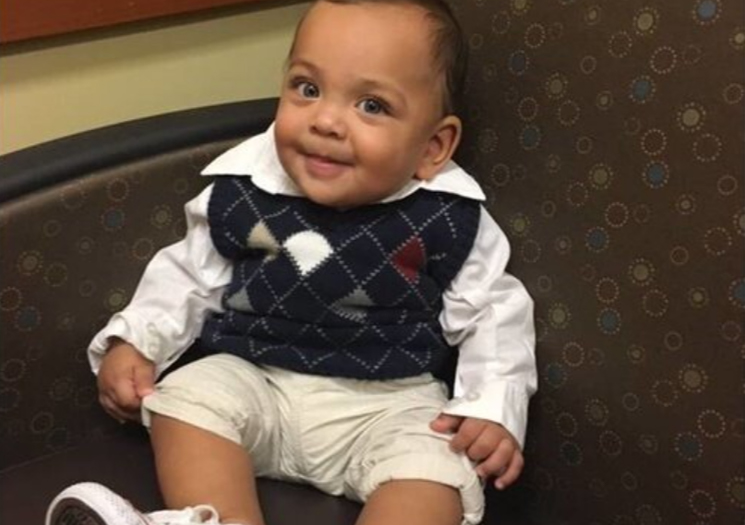
You’d never know that Hector spent his first 116 days in our NICU.
Paula was admitted to the hospital at 26 weeks for a cough and spotting. Luckily, her doctor decided to not discharge Paula, but rather monitor her and her growing baby.
That night, Paula went into labor and on October 15, 2018 Hector Jr was born. His eyes were fused shut and he measured only about 24-25 weeks gestation. His birth weight was 2lbs 3oz and dropped during his first week.
Paula shared “it was my first baby and we had tried for so long to get pregnant. I had a picture of things being so different. It’s really hard. All my trust was in the nurses and doctors.”
Paula turned to online support groups to find moms in similar situations. These groups along with the bond she made with her new nicu family— the incredible nurses and doctors—helped her through this very difficult time.
Today, baby Hector is meeting all of his goals and milestones. And mom, Paula is enjoying every minute with her baby boy.
Thank you to Paula and Hector Jr. for sharing your experience with us. Thank you to the amazing nurses and doctors who took such incredible care of Hector.
Here’s a video Paula made as tribute to her and Hector’s NICU journey.
categories:

On July 24, Judith (Judy) Jarvis returned to the place of her birth: Holy Redeemer Hospital. Judy wasn’t just born at Holy Redeemer, she was the first baby ever born at Holy Redeemer. The talented artist served as a special guest for the inaugural distribution of Redeemer Baby Receiving Blankets to new mothers.
Redeemer Baby is an online community for all things maternity. Each day followers get a chance to see the “baby of the week,” learn more about Holy Redeemer’s dedicated OB/GYNs and have access to informational blogs and stories that cover the gamut from the first signs of pregnancy to what to expect after delivery. And now, every baby born at Holy Redeemer will receive a Redeemer Baby swaddle blanket as a way to welcome them into the “Redeemer Family.”
Judy enjoyed talking with new families and taking in the renovations and improvements Holy Redeemer has put in place since her entrance into the world back in 1959. She even donated a breathtaking painting to the Holy Redeemer Maternity unit to celebrate the place where her own story started.
categories:
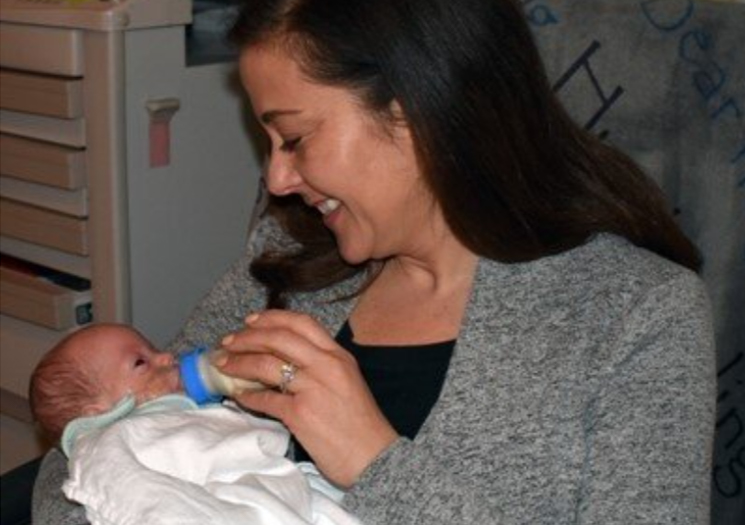
When Kate and Stefan’s twins entered the world, the couple knew their lives were about to change but they had no idea the many ways how.
Alex and Avery were born premature on December 23, 2018 and weighed 1.6 pounds and 1.7 pounds respectively. They were immediately transported to Holy Redeemer’s Level III Neonatal Intensive Care Unit (NICU).
As the babies were stabilized, the doctors carefully explained everything. Kate and Stefan would need to prepare themselves for a long NICU journey. The couple was in the process of moving and their home was hours away. They would need accommodations in the area to stay close to their babies. The Sisters of the Redeemer offered the Province Center as refuge. Grateful for the offer, Kate was able to secure accommodations at a nearby Marriott.
Under the watchful eye of Holy Redeemer’s NICU nurses and doctors, the tiny twins fought to grow stronger. But Alex was struggling and became ill. On December 29, he was transported to Children’s Hospital of Philadelphia (CHOP) for specialized treatment. Not only were Kate and Stefan away from their home, but now their babies were being treated in two different locations.
“We were thrown into a complex situation and had no idea what we were doing,” Kate said.
Kate and Stefan spent Monday through Saturday at the NICU and slept at their hotel. On Sundays they would go back home to New Jersey to wash clothes and pack for the following week. Kate says the only comfort she had on Sundays was knowing that the NICU nurses were keeping watch over her babies. When given the chance to transfer the twins closer to home, both Kate and Stefan refused. They knew their son and daughter were receiving the best care imaginable.
“The nurses became our family December 2018.They coached us and helped us navigate the care process. Everything from medical paperwork to basic premature baby care. It was incredible,” Kate said. One evening the NICU nurses surprised Kate and Stefan with a homemade lasagna. As they sat down to enjoy their first home cooked meal in weeks, they cried tears of gratitude. The simple gesture meant the world to the NICU couple.
As 2019 began, Kate adjusted to becoming a new mom. Avery was making a lot of progress but Alex was still ill at CHOP. On January 9th, shortly after Alex’s godparents had the chance to meet him, he passed away.
“Avery gained an angel that day. I know her brother is looking down on her,” Kate said. Kate’s NICU family didn’t leave her side. The nursing staff sat with her, talked with her and helped her through the grieving process while supporting baby Avery each day. Kate felt surrounded by sisters, mothers and friends.
“If it wasn’t for them I don’t’ know what we would have done,” Kate said.
By March, Kate had become a staple in Holy Redeemer’s NICU. While she was excited for the day she could bring Avery home, she almost didn’t want to leave. The staff had become such a part of her and Avery’s life, but the day finally arrived when Kate, Stefan and Avery could go back home and be together forever.
“I want to thank them for their unbelievable compassion, their 24/7 care, their knowledge and coaching,” Kate said. “Everyone treated us with extraordinary kindness. We will never forget each nurse and doctor who touched our lives.”
When Kate’s employer, Kohl’s Corporate, heard her story, they felt immense gratitude for Holy Redeemer’s NICU and staff. Wanting to give back, Kohl’s offered to co-host a 6K walk/run. The event was held on Saturday, September 14th in honor of Kate, Avery, Alex and the angels of Holy Redeemer’s NICU and raised $14,000 for the NICU.
categories:
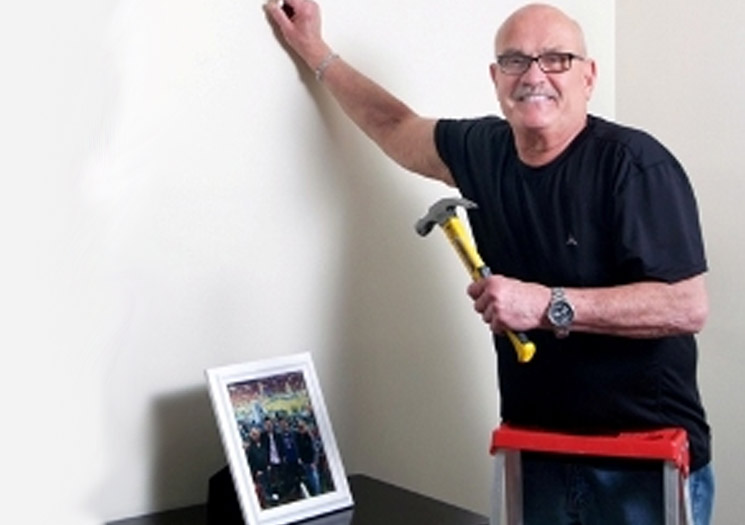
Kenneth Larsen, 68, spent over 20 years working as a New York City subway engineer. He started out as a porter, sweeping the subway stations. Then he worked his way up to conductor and climbed up and down the subway trains as part of his job. Eventually, Larsen became a subway engineer. In this role, he would climb up and down the train and stop and start the train every twenty seconds for at least two hours straight. His long-time career meant over 20 years of repetitive arm movement which, as Larsen aged, led to chronic shoulder pain.
At first, Larsen treated his shoulder pain with Tylenol. When that wouldn’t numb the pain, his primary care physician recommended injections. However, Larsen was told he couldn’t stay on the injections forever. Larsen decided to get arthroscopic surgery to repair the tears in his rotator cuff. Unfortunately this was a temporary fix. Four years later, Larsen considered shoulder replacement surgery.
“It got so bad I could barely raise my arm,” Larsen said.
A friend of Larsen’s had her knee replaced by Dr. Seth Krum of Pennsylvania Orthopedic Associates. She had such great results; Larsen requested to go there too.
That friendly referral led Larsen to meet Dr. Nick Phillips, an orthopedic surgeon who specializes in upper extremities . In March 2018, Larsen had his right shoulder replaced.
“The surgery was successful and I started rehab right away,” Larsen said. “My physical therapist was amazed at how well I recuperated. I finished my physical therapy in six months when it normally takes a year.”
Seven months later, November 2018, Larsen had his son and grandson come up from Florida to visit him. The trio went to a Sixers basketball game, watched auto racing and participated in ax throwing for nearly three hours.
“We were so good, the ax master went out to his car and got a larger ax,” Larsen said. “That goes to show you how well I improved and recovered. I could throw that ax with no problem whatsoever.”
Today Larsen gets to enjoy the activities he loved before his shoulder pain got in the way. He is an usher at his church parish and volunteers monthly at Pennypack Park. He plans to get his left shoulder replaced sometime next year.
“Thank God, for that practice,” Larsen said. “The whole point of surgery is to be able to go back to life and have fun.”
To learn more about our orthopedic services visit Redeemer Orthopedics
